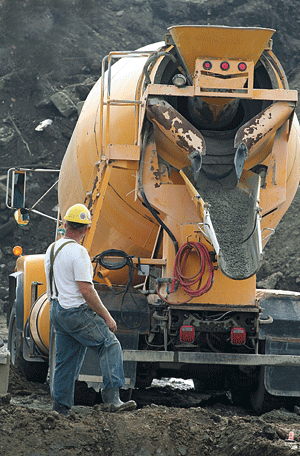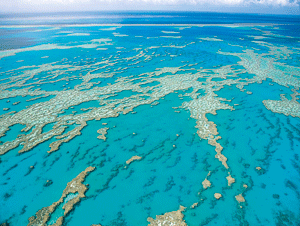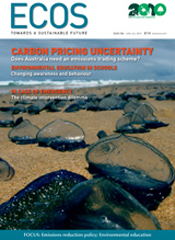
|
Published:
Can we reduce emissions without an emissions trading scheme?
Against a backdrop of sharply rising emissions, the federal government has announced that it will postpone the introduction of a Carbon Pollution Reduction Scheme (CPRS) until after 2012. This has frustrated many groups, who are concerned that the uncertainty around carbon pricing will drive investment elsewhere – and that the case for bringing emissions under control is now more urgent than ever. Rachel Sullivan reports.
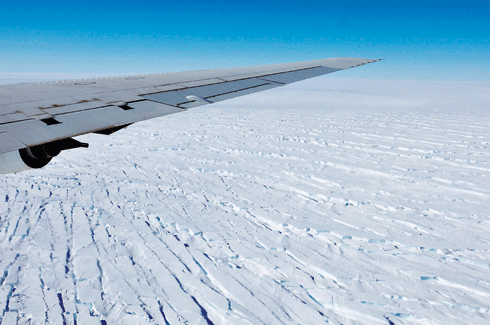
|
|
Pine Island Glacier, West Antarctica, may have passed a ‘tipping point’ in the 1990s. Credit: NASA
|
Several days after the federal government’s announcement in late April that it would postpone the introduction of an emissions trading scheme (ETS) until after the expiry of the Kyoto Protocol in 2012, more than 700 representatives of the clean energy sector attended the Clean Energy Council’s annual conference in Adelaide. For many, it was their first opportunity to discuss the implications of the government’s about-face.
‘There was a general feeling of disappointment because Australia would not be getting an ETS in the near future, but the [federal government’s] revised renewable energy target legislation was seen as more important to members of the clean energy sector,’ says Clean Energy Council Policy Director, Russell Marsh.
In his keynote address to the conference, Michael Fraser, AGL Managing Director and Chief Executive Officer, said that ‘one of the great strengths of Australia as an investment destination over many years now is that we have had political stability and we’ve had regulatory certainty.
‘When you look at what’s happened in the whole climate change policy debate over the last 12 months, that stability and certainty are really the last words that would come to mind for investors looking at this sector. There is already considerable uncertainty around carbon pricing, and failure to ensure a stable investment will see flow-on impacts for investment in other energy infrastructure.’
Anna Skarbek, Executive Director of ClimateWorks Australia, agrees.
‘Having a carbon price in the economy makes a huge difference to investors and to organisations wanting to undertake emissions reduction-related activities. We need a carbon price to encourage larger scale investments.’
Philip Sutton, Climate Emergency Network Convenor, says he was ‘dismayed’ at the decision, ‘not because of the postponement of the CPRS, but because of the postponement of any decision on a macro level for a number of years.1
‘The Climate Emergency Network has consistently opposed the CPRS as a flawed mechanism due to its inadequate targets, excessive compensation to polluters and reliance on international offsets that avoid structural change in the Australian economy.
‘The government’s decision to distance itself from an emissions trading system offers a fresh opportunity to rethink climate policy in Australia, but to drop macroeconomic management of greenhouse gas emissions completely is the height of irresponsibility,’ he says.
‘The scale of change needed is massive and we need to be doing it much faster. Action on climate change is needed now, not in 2013.’
Professor Matthew England, Co-Director of the University of New South Wales’ Climate Change Research Centre, also believes urgent action is essential.
‘Greenhouse gas emissions are out of control globally. Our emissions trajectory is steeply rising when it needs to be steeply falling. We are on a trajectory to deliver a very costly climate future,’ he says.
‘Our climate system is continuing to change at a very rapid rate, and in many cases the changes have been far more rapid than expected 10 to 15 years ago.’
Prof. England is one of the authors of The Copenhagen Diagnosis.2 According to this report, if long-term global warming is to be limited to a maximum of 2°C above pre-industrial values, average annual per-capita emissions in industrialised nations will have to be reduced by around 80–95 per cent below 1990 levels by 2050.
The report says the Greenland and Antarctic ice sheets are losing mass and contributing to sea-level rise at an increasing rate. The area of summer sea ice remaining during 2007–09 was about 40 per cent less than the average projection from the 2007 IPCC Fourth Assessment Report.3 As a result of melting ice sheets and ocean thermal expansion, global sea levels may rise by more than one metre by 2100.
Locally, the Safe Climate Australia Transition Plan Strategic Framework4 says that by 2020, the Great Barrier Reef is expected to be suffering annual bleaching events, with an estimated ten-year recovery time from a bleaching event. It has also recently been estimated that the Pine Island Glacier in the West Antarctic crossed a key tipping point in the mid 1990s, and a 0.25-metre sea rise from this source alone might now be hard to prevent.5
‘In Australia, temperature change has occurred at the expected pace, but this will only accelerate unless we reduce our emissions,’ says Prof. England. ‘To avoid the worst impacts of climate change, global emissions must decline rapidly within the next five to ten years.’
Seeking certainty
Philip Sutton believes that the transition to a safe climate could happen in as little as seven years. Apart from an ETS, a carbon tax (see box), a renewable energy target and state-based feed-in tariffs are other major price mechanisms that could rapidly reduce emissions. But Sutton believes non-price measures are also critical for a high-speed transformation of the economy.
|
In his controversial 2008 report to the Australian Government, economist Professor Ross Garnaut suggested that ‘a carbon tax would be better than a heavily compromised emissions trading scheme’.1 |
The idea of a carbon tax has many supporters. Among them is Dr Donna Green from the UNSW’s Climate Change Research Centre, co-author of Screw Light Bulbs: Smarter Ways to Save Australians Time and Money2. Dr Green believes the delay of the Carbon Pollution Reduction Scheme provides an opportunity to re-examine the idea of a carbon tax as an alternative -– and better – way of reducing emissions. |
Carbon taxes work by putting a price on carbon pollution: the higher the carbon intensity of the fuel, the higher the tax. While the cost of the tax would flow on to goods and services, Dr Green argues that the growth in new lower-emissions industries would help compensate for this additional cost. |
‘Carbon taxes have been demonstrated to reduce emissions,’ she says, citing the example of Sweden, which helped pioneer carbon taxes in 1991. Swedes have made a fundamental shift in the way they run their businesses and households. As a result, the country’s greenhouse gas emissions have fallen by more than seven per cent below 1990 levels, while its GDP has grown more than 40 per cent. |
‘A carbon tax would provide more transparency [than an ETS], because businesses would have more certainty about what they would have to pay, and also what their competitors are paying,’ according to Dr Green. She adds that a carbon tax would also allow businesses to plan ahead more effectively, instead of being at the mercy of carbon price spikes, which has happened in the European Union. |
The Clean Energy Council’s Russell Marsh doesn’t believe it’s that simple. |
‘A carbon tax is not necessarily a better instrument than an ETS,’ he says. ‘It makes carbon more expensive, but doesn’t guarantee reductions. It would also be open to as much lobbying and advocacy from the people impacted by it.’ |
Dr Green disagrees, saying that while introducing new taxes is never popular, the government needs to listen to the strong message from business and the community, who hold government accountable for reducing emissions. |
‘While we remain in this policy vacuum,’ she says, ‘emissions will keep going up.’ |
1 Australian Treasury. (2008) Australia’s Low Pollution Future: The Economics of Climate Change Mitigation. |
‘Investment certainty plus a major redirection of the economy could be provided with relatively little cost – if the construction of new coal-fired power stations that don’t have 100 per cent CO2 capture technology built in and operational from the start was banned, and any other new electricity generation systems were required to limit their CO2 emissions to no more than the level achievable by best-practice gas combined-cycle power stations.’
Further transformation would occur, Sutton says, if all electricity generation plants – new or old – were required to switch to renewable sources, or to implement fully operational 100 per cent CO2 capture and storage technology, by 2020.
‘It is possible if we’re sufficiently motivated,’ he says. ‘The last time we faced anything like this level of threat was during World War II. Confronted by a risk-management situation, the government made direct decisions about what needed to happen and then made sure they did.
‘We need to make the issue of climate change so real that people will start making anticipatory decisions and act quickly, not put off necessary change.’
While the political environment catches up, commentators agree there is a lot of goodwill among community groups, companies and government bodies that want to get moving on activities to reduce their emissions.
‘Regardless of the continuing uncertainty around the government’s CPRS and the decision to push it back to a later date, industry remains committed to reducing emissions and improving energy efficiency,’ says Australian Industry Group Chief Executive, Heather Ridout.
‘Furthermore, as industry puts in place longer-term investment strategies, it will be factoring in future risks and costs associated with climate change policies,’ she says.
Energy efficiency opportunities
The Green Building Council of Australia (GBCA) is stepping up its campaign to encourage the use of complementary measures that promote energy efficiency in the built environment.
‘With no CPRS until at least 2013, investment in greening our buildings must be prioritised,’ says GBCA Chief Executive, Romily Madew. She points out that a number of international reports have found that proven and commercially available technologies could reduce energy consumption in old and new buildings by 30–50 per cent – without significantly increasing investment costs.
‘The UNEP [United Nations Environment Programme] has said that no other sector has such a huge potential for drastic emission reductions,’ she says. ‘The Australian Sustainable Built Environment’s Second Plank report6 has found that complementary measures could deliver greenhouse gas savings of 60 million tonnes per annum by 2030, representing a 27–31 per cent reduction on business-as-usual projections.’
New research by ClimateWorks supports this conclusion, with its Low Carbon Growth Plan for Australia7 finding that improving energy efficiency in buildings and appliances, and boosting the numbers of trees growing on farms, could help Australia cost-effectively cut its greenhouse gas emissions by 2020.
The report identifies 54 separate opportunities based on technologies available today, which together could reduce emissions by 249 million tonnes of CO2 equivalent (MtCO2e), a cut of 25 per cent below 2000 levels. This would cost society just $185 per household per annum in 2020.
The plan also identifies the actions required to reduce emissions, as well the barriers to their implementation and their relative cost in six key sectors: power, forestry, industry, buildings, agriculture and transport.
‘The power and forestry sectors offer the largest emissions reduction opportunity (59 per cent or 147 MtCO2e), but come at the highest cost (an average of $40 per tCO2e),’ the report states.
‘Industry, buildings, agriculture and transport each offer smaller reduction opportunities, but together still represent a 102 MtCO2e opportunity. They are also mostly economically attractive, with average net savings to society of $40 per tCO2e.’
The report demonstrates that 29 per cent of the required cuts could be achieved by measures that would actually produce a net saving for business, such as efficiency improvements in buildings, industry and transport.
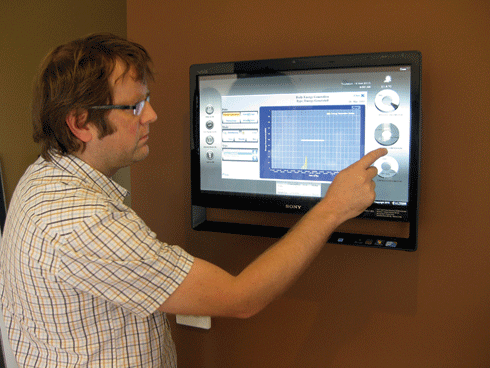
|
|
By 2020, the Great Barrier Reef is expected to suffer annual bleaching events. Credit: iStockphoto
|
An additional 36 per cent of emissions reduction could be achieved in the forestry and agriculture sectors by planting trees on farms as windbreaks, shade islands for stock or streambank revegetation. Trees could also be planted as environmental plantations – forests planted purely for their carbon sequestration benefits.
Behavioural changes such as car pooling, reducing bottled water consumption and encouraging more videoconferencing could also cut emissions. The final 35 per cent of emissions cuts, according to the report, would cost between $30 and $100 per tonne as the shift towards lower emissions technology occurred in the power sector.
For business to invest in such emissions reduction opportunities, however, a carbon price incentive is essential. ClimateWorks estimates that a carbon price of $43 per tonne in 2013, rising to $69 per tonne in 2020, could more than triple the emissions reduction opportunities, with a positive return for business; the total potential cuts from profitable opportunities could increase from 54 to 199 MtCO2e (ie 80 per cent of the total opportunity identified in the report).
‘We have identified many opportunities over the next decade,’ says Anna Skarbek. ‘But delaying action, such as by failing to upgrade housing or vehicle standards, will mean some of these opportunities are lost, locking in those emissions and resulting in greater cost to society and business over the longer term.’
1 Climate Emergency Network is a web-based network of community groups and others interested in campaigning for urgent action on climate change (see www.climateemergencynetwork.org)
2 The full report is available at www.copenhagendiagnosis.org
3 Read the report at http://tinyurl.com/ipccreport1
4 See http://www.safeclimateaustralia.org
5 Katz RF & MG Worster (2010) Stability of ice-sheet grounding lines, Proceedings of the Royal Society A, 466, 1597–1620, doi:10.1098/rspa.2009.0434
6 http://tinyurl.com/asbec2
7 http://tinyurl.com/climateworks-plan


